
Impact of Cultural and Linguistic Variables On Speech-Language Services


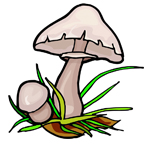
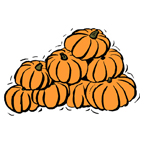
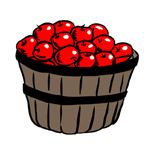 There are many fun language based activities parents can do at home with their newly (and not so newly) internationally adopted preschool and school aged children in the fall. One of my personal favorites is bingo. Boggles World, an online ESL teacher resource actually has a number of ready made materials, flashcards, and worksheets which can be adapted for such purposes. For example, their Fall and Halloween Bingo comes with both call out cards and a 3×3 and a 4×4 (as well as 3×3) card generator/boards. Clicking the refresh button will generate as many cards as you need, so the supply is endless! You can copy and paste the entire bingo board into a word document resize it and then print it out on reinforced paper or just laminate it.
There are many fun language based activities parents can do at home with their newly (and not so newly) internationally adopted preschool and school aged children in the fall. One of my personal favorites is bingo. Boggles World, an online ESL teacher resource actually has a number of ready made materials, flashcards, and worksheets which can be adapted for such purposes. For example, their Fall and Halloween Bingo comes with both call out cards and a 3×3 and a 4×4 (as well as 3×3) card generator/boards. Clicking the refresh button will generate as many cards as you need, so the supply is endless! You can copy and paste the entire bingo board into a word document resize it and then print it out on reinforced paper or just laminate it.
Fall vocabulary words include: corn, crops, farmer, scarecrow, apples, acorns, oak leaf, maple leaves, ginkgo leaves, grapes, mushrooms, salmon, geese, squirrel, jacket, turkey, Jack-O’-Lantern, rake, pumpkins, harvest moon, hay, chestnuts, crow, and sparrow
Halloween vocabulary words include: witch, ghost, skeleton, skull, spider, owl, Jack-O’-Lantern, devil, cobweb, graveyard, clown, pirate, robot, superhero, mummy, vampire, bat, black cat, trick or treaters, alien, werewolf
|
|
|||
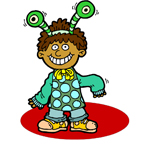 |
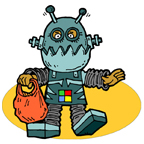 |
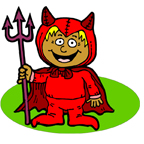 |
 |
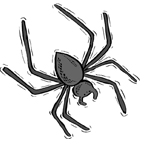 |
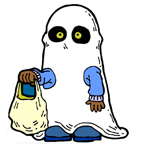 |
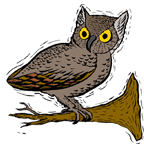 |
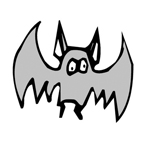 |
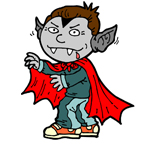 |
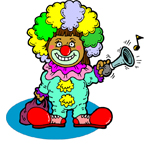 |
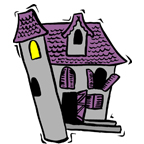 |
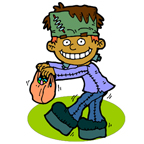 |
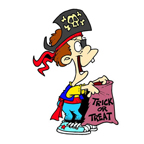 |
 |
 |
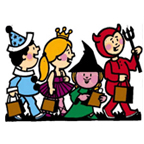 |
Now the fun begins!
Some suggested activities:
Practice Vocabulary Labeling: Label the words for newly adopted IA children and get them to say the words after you.
Practice Simple Sentences: Make up simple sentences such as A spider lives in a cobweb or A squirrel is eating an acorn.
Practice Rhyming: what rhymes with cat/bat/ trick/leaf/ rake/moon?
For those children who are having articulation (speech) difficulties practice saying words with select sounds (/ch/, /sh/, /l/, etc) to improve their intelligibility (pronunciation)
Practice Categorization Skills: Name some fall words, Halloween words, name some popular halloween costumes, name some popular fall activities, etc
Practice naming Associations: what goes with a witch (broom), what goes with a squirrel (acorn), etc
Practice expanding vocabulary by providing Attributes (object characteristics): Take a noun-word (thing) such as “squirrel” and answer some questions about it: what is it? what does it do? where do you find it? what are its parts? What color/shape is it? does it make any sounds? what goes with it. Here’s one example, (I see a pumpkin. It’s a fruit/vegetable that you can plant, grow and eat. You find it on a farm. It’s round and orange and is the size of a ball. Inside the pumpkin are seeds. You can carve it and make a jack o lantern out of it).
Practice expanding language by providing relevant Definitions: Tell me what a skeleton is. Tell me what a scarecrow is.
Practice improving their Problem Solving abilities by naming Similarities and Differences among semantically related items: How are pumpkin and apple alike? How are they different?
Help them understand that many words can have more than one meaning and explain Multiple Meaning words to them: A bat, witch, clown, can mean _____ and also mean _________
So join in the fun and start playing today! 
Resources:
Bogglesworld Halloween Bingo Board and Cards http://bogglesworldesl.com/halloweenbingo.htm
Bogglesworld Fall Bingo Board and Cards http://bogglesworldesl.com/autumn_bingo.htm
Recently I began writing a series of posts on the topic of comprehensive assessment of dyslexia.
In part I of my post (HERE), I discussed common dyslexia myths as well as general language testing as a starting point in the dyslexia testing battery.
In part II (HERE) I detailed the next two steps in dyslexia assessment: phonological awareness and word fluency testing.
In part III (HERE) I discussed reading fluency and reading comprehension testing.
Today I would like to discuss part IV of comprehensive dyslexia assessment, which involves spelling and writing testing.
Spelling errors can tell us a lot about the child’s difficulties, which is why they are an integral component of dyslexia assessment battery. There is a significant number of linguistic skills involved in spelling. Good spellers have well-developed abilities in the following areas (Apel 2006, Masterson 2014, Wasowicz, 2015):
By administering and analyzing spelling test results or spelling samples and quizzes, we can determine where students’ deficits lie, and design appropriate interventions to improve knowledge and skills in the affected areas.
 While there are a number of spelling assessments currently available on the market I personally prefer that the Test of Written Spelling – 5 (TWS-5) (Larsen, Hammill & Moats, 2013). The TWS-5 can be administered to students 6-18 years of age in about 20 minutes in either individual or group settings. It has two forms, each containing 50 spelling words drawn from eight basal spelling series and graded word lists. You can use the results in several ways: to identify students with significant spelling deficits or to determine progress in spelling as a result of RTI interventions.
While there are a number of spelling assessments currently available on the market I personally prefer that the Test of Written Spelling – 5 (TWS-5) (Larsen, Hammill & Moats, 2013). The TWS-5 can be administered to students 6-18 years of age in about 20 minutes in either individual or group settings. It has two forms, each containing 50 spelling words drawn from eight basal spelling series and graded word lists. You can use the results in several ways: to identify students with significant spelling deficits or to determine progress in spelling as a result of RTI interventions.
Now, lets move on to assessments of writing. Here, we’re looking to assess a number of abilities, which include:
Again it’s important to note that much like the assessments of reading comprehension there are no specific tests which can assess this area adequately and comprehensively. Here, a combination of standardized tests, informal assessment tasks as well as analysis of the students’ written classroom output is recommended.
For standardized assessment purposes clinicians can select Test of Early Written Language–Third Edition (TEWL–3) or Test of Written Language — Fourth Edition (TOWL-4).
The TEWL-3 for children 4-12 years of age, takes on average 40 minutes to administer (between 30-50 mins.) and examines the following skill areas:
Basic Writing. This subtest consists of 70 items ordered by difficulty, which are scored as 0, 1, or 2. It measures a child’s understanding of language including their metalinguistic knowledge, directionality, organizational structure, awareness of letter features, spelling, capitalization, punctuation, proofing, sentence combining, and logical sentences. It can be administered independently or in conjunction with the Contextual Writing subtest.
Contextual Writing. This subtest consists of 20 items that are scored 0 to 3. Two sets of pictures are provided, one for younger children (ages 5-0 through 6-11) and one for older children (ages 7-0 through 11-11). This subtest measures a child’s ability to construct a story given a picture prompt. It measures story format, cohesion, thematic maturity, ideation, and story structure. It can be administered independently or in conjunction with the Basic Writing subtest.
Overall Writing. This index combines the scores from the Basic Writing and Contextual Writing subtests. It is a measure of the child’s overall writing ability; students who score high on this quotient demonstrate strengths in composition, syntax, mechanics, fluency, cohesion, and the text structure of written language. This score can only be computed if the child completes both subtests and is at least 5 years of age.
 The TOWL-4 for students 9-18 years of age, takes between 60-90 minutes to administer (often longer) and examines the following skill areas:
The TOWL-4 for students 9-18 years of age, takes between 60-90 minutes to administer (often longer) and examines the following skill areas:
It has 3 composites:
However, for the purposes of the comprehensive assessment only select portions of the above tests may need be administered since other overlapping areas (e.g., spelling, punctuation, etc.) may have already been assessed by other tests, a analyzed via the review of student’s written classroom assignments or were encompassed by educational testing.
 As an SLP who works with children with social pragmatic language disorders, I can’t but think of what happens after these clients leave school? How will they continue to improve their social cognitive abilities in order to effectively meet social challenges in their workplace? Michelle Garcia Winner and Pamela Crooke effectively address this issue in their recent book “Social Thinking® At Work: Why Should I Care”. In it, they offer practical advice to adults with social thinking® challenges regarding how to navigate the intricacies of social interaction in the workplace. Continue reading After the Graduation: Review and Giveaway of Social Thinking® At Work
As an SLP who works with children with social pragmatic language disorders, I can’t but think of what happens after these clients leave school? How will they continue to improve their social cognitive abilities in order to effectively meet social challenges in their workplace? Michelle Garcia Winner and Pamela Crooke effectively address this issue in their recent book “Social Thinking® At Work: Why Should I Care”. In it, they offer practical advice to adults with social thinking® challenges regarding how to navigate the intricacies of social interaction in the workplace. Continue reading After the Graduation: Review and Giveaway of Social Thinking® At Work
Will be presenting a webinar via speechpathology.com on July 2nd 2012 at 12pm EDT entitled
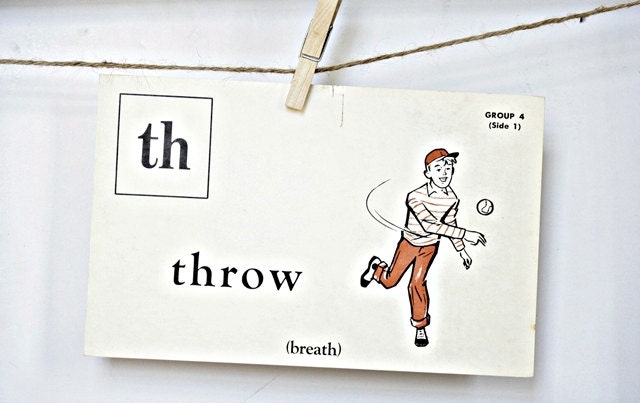 I have to admit, I don’t really like flashcards. I especially don’t like it when parents or SLPs use flashcards to drill vocabulary in toddlers and preschoolers, much less school aged children. I feel that it produces very limited learnability and generalization. I am personally a proponent of thematic language learning, since it allows me to take a handful of words/concepts and reinforce them in a number of different ways. The clients still get the benefit of information repetition, much like one would get during a typical flashcard drill. However, they are also getting much more. Thematic language learning allows the client to increase word comprehension, make connections to real life scenarios, develop abstract thinking skills, as well as to transfer and generalize knowledge (Morrow, Pressley, Smith, & Smith, 1997; Ramey, 1995).
I have to admit, I don’t really like flashcards. I especially don’t like it when parents or SLPs use flashcards to drill vocabulary in toddlers and preschoolers, much less school aged children. I feel that it produces very limited learnability and generalization. I am personally a proponent of thematic language learning, since it allows me to take a handful of words/concepts and reinforce them in a number of different ways. The clients still get the benefit of information repetition, much like one would get during a typical flashcard drill. However, they are also getting much more. Thematic language learning allows the client to increase word comprehension, make connections to real life scenarios, develop abstract thinking skills, as well as to transfer and generalize knowledge (Morrow, Pressley, Smith, & Smith, 1997; Ramey, 1995).
However, even though I dislike flashcards, I still don’t necessarily want to give up using them completely, especially because nowadays many different type of image based language flashcards can be found for free as both printables as well as Iphone/Ipad apps. Consequently, I decided to pick a free flashcard app and adapt it or rather “appdapt” it (coined by “The Speech Guy”, Jeremy Legaspi, the “Appdapt Guru”) in a meaningful and functional way for my students.
After looking over and rejecting a number of contenders, without a clear plan of action in mind, I stumbled upon a free app, ABA Flash Cards – Actions by kindergarten.com, which is designed to target verb labeling in ASD children. When I saw this app, I immediately knew how I wanted to appdapt it. I especially liked the fact that the app is made for both Ipad and Iphone. Here’s why.
My primary setting is an out of district day school inside a partial psychiatric hospital. So in my line of work I frequently do therapy with students just coming out from “chill out rooms” and “calm down areas”. This is definitely not the time when I want to bring or use a lot of materials in the session, since in a moment’s notice the session’s atmosphere can change from calm and productive into volatile and complicated. I also didn’t want to use a bulky Ipad in sessions with relatively new children on the caseload, since it usually takes a few sessions of careful observations and interaction to learn what makes them “tick”. Consequently, I was looking for an app which could ideally be downloaded onto not just the Ipad but also the Iphone. I reasoned that in unexpected situations I could simply put the phone into my pocket, unlike the Ipad, which in crisis situations can easily become a target or a missile.
Given the fact that many children with psychiatric disorders present with significant social pragmatic language deficits (Hyter, 2003; Hyter et al 2001; Cohen et al., 1998; Bryan, 1991; Goldman, 1987 ), which is certainly the case for the children on my caseload, I planned on adapting this app to target my students’ pragmatic language development, social problem solving skills as well as perspective taking abilities.
So here are just a few examples of how I appdapted the cards. First, I turned off the sound, since the visual images were what I was going after. Then I separated the cards into several categories and formulated some sample questions and scenarios that I was going to ask/pose to the students:
Making Inferences (re: People, Locations and Actions)

What do you think the girl is thinking about?
How do you know what she is thinking?
How do you think she is feeling?
How can you tell?
Where do you think she is?
How do you know?
Multiple Interpretations of Actions and Settings:

What do you think the girl is doing?
What else could she be doing?
 How does the boy feel about the flower?
How does the boy feel about the flower?
Give me a different explanation of how else can he possibly feel?

Who are the boys in the picture? (relationship)
Who else could they be?
What do you think the boy in a blue shirt is whispering to the boy in a red shirt?
What else could he be saying?
How do you know?
Supporting Empathy/Sympathy and Developing Peer Relatedness:

How does this child feel?
Why do you think he is crying?
What can you ask him/tell him to make things better?
 The girl is laughing because someone did something nice for her?
The girl is laughing because someone did something nice for her?
What do you think they did?
Interpreting Ambiguous Situations:

What is the girl doing?
Who do you think is the woman in the picture?
How do you know?
How does she feel about what the girl is doing?
How do you know?
My goal was to help the students how to correctly interpret facial features, body language, and context clues in order to teach them how to appropriately justify their responses. I also wanted to demonstrate to them that many times the situations in which we find ourselves in or the scenes that we are confronted with on daily basis could be interpreted in multiple ways. Moreover, I wanted to teach how appropriately speak to, console, praise, or compliment others in order to improve their ability to relate to peers. Finally, I wanted to provide them with an opportunity to improve their perspective taking abilities so they could comprehend and verbally demonstrate that other people could have feelings, beliefs and desires different from theirs.
Since I knew that many of my students had significant difficulties with even such simple tasks as labeling and identifying feelings, I also wanted to make sure that the students got multiple opportunities to describe a variety of emotions that they saw in the images, beyond offering the rudimentary labels of “happy”, “mad”, “sad”, so I took pictures of Emotions Word Bank as well as Emotion Color Wheel courtesy of the Do2Learn website, to store in my phone, in order to provide them with extra support.


The above allowed me not only to provide them with visual and written illustrations but also to teach them synonyms and antonyms of relevant words. Finally, per my psychotherapist colleagues request, I also compiled a list of vocabulary terms reflecting additional internal states besides emotions (happy, mad) and emotional behaviors (laughing, crying, frowning). These included words related to: Cognition (know, think, remember, guess), Perception (see, hear, watch, feel), and Desire (want, need, wish), (Dodd, 2012) so my students could optimally benefit not just from language related therapy services but also their individual psychotherapy sessions as well.
Bryan, T. (1991). Social problems and learning disabilities. In B. Y. L. Wong (Ed.), Learning about learning disabilities (pp. 195-229). San Diego, CA: Academic Press.
Cohen, N. & Barwick, M. (1996) Comorbidity of Language and Social-Emotional Disorders: Comparison of Psychiatric Outpatients and Their Siblings. Journal of Clinical Child Psychology, 25(2), 192-200.
Goldman, L. G. (1987). Social implications of learning disorders. Reading, Writing and Learning Disabilities, 3, 119-130.
Hyter, Y. D., et al (2001). Pragmatic language intervention for children with language and emotional/behavioral disorders. Communication Disorders Quarterly, 23(1), 4–16.
Hyter, Y. D. (2003). Language intervention for children with emotional or behavioral disorders. Behavioral Disorders, 29, 65–76.
Morrow, L. M., Pressley, M., Smith, J.K., & Smith, M. (1997). The effect of a literature-based program integrated into literacy and science instruction with children from diverse background. Reading Research Quarterly, 32(1), 54-76.
Petersen, D. B., Dodd, J & Finestack, L. H (2012, Oct 9) Narrative Assessment and Intervention: Live Chat. Sponsored by SIG 1: Language Learning and Education. http://www.asha.org/events/live/10-09-2012-narrative-assessment-and-intervention/
Ramey, E. K. (1995). An integrated approach to language arts instruction. The Reading Teacher, 48(5), 418-419.
 Today I am excited to review one of the latest products from Busy Bee Speech “Common Core Standards-Based RtI Packet for Language“.
Today I am excited to review one of the latest products from Busy Bee Speech “Common Core Standards-Based RtI Packet for Language“.
So what is RtI or Response to Intervention?
Developed as an alternative to the ability–achievement “discrepancy model,” which requires children to show a discrepancy between their IQ and standardized tests/grades, RtI is a method of academic intervention aimed to provide early, systematic assistance to children who are having difficulty learning in order to prevent academic failure via the provision of early school based intervention, frequent progress measurement, and increasingly intensive research-based instructional interventions for children who continue to have difficulty learning.
In contrast to a number of schools in my state (New Jersey), RTI or Response to Intervention is currently not utilized in my unique setting (outpatient specialized school in a psychiatric hospital). Continue reading It’s all about RtI!
A little while ago I reviewed “Speech Therapy for Apraxia” by Blue Whale Apps. You can Find this post HERE. I liked that app so much so I asked the developer to take a look at the next level of this app “Speech Therapy for Apraxia – Words”.
Similarly to Speech Therapy for Apraxia, Speech Therapy for Apraxia-Words is designed for working on motor planning with children and adults presenting with developmental or acquired apraxia of speech. Continue reading App Review and Giveaway: Speech Therapy for Apraxia – Words

 A few weeks ago I received my new gleaming set of Speech Buddies for the purposes of review. So today I’ll be describing my experiences using speech buddies in speech therapy with several clients. My client’s ages were 3.5, 4.5, 8, and 9. Prior to initiating the use of the speech buddies I have posed a number of questions for myself including:
A few weeks ago I received my new gleaming set of Speech Buddies for the purposes of review. So today I’ll be describing my experiences using speech buddies in speech therapy with several clients. My client’s ages were 3.5, 4.5, 8, and 9. Prior to initiating the use of the speech buddies I have posed a number of questions for myself including: